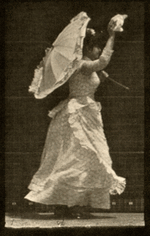-
TIBET 2014 ( PHOTOGRAPHIES de Jan Reurink reurinkjan Photographe CHINOIS fantastique)
PHOTOGRAPHIES de Jan Reurink reurinkjan Photographe CHINOIS fantastique

Litang county occupies the high Puborgang range, which forms a watershed between the Dri chu འབྲི་ཆུ་ (Yangtze) around Batang and the lower Nyag chu ཉག་ཆུ་ (Yalong) basin. The town of Litang, characterized by its large stone houses, lies near the source of the Li chu tributary of the Nyag chu ཉག་ཆུ་ (Yalong), and is one of the highest settlements in East Tibet at 4.014 m.


Shot to the entrance of Jinlong Gonpa (insecure of monastery name)
Present-day Dardo county broadly corresponds to the heart of the ancient Chakla Kingdom, which until the mid-20th century was governed by the Chakla Gyelpo from Dartsedo town. It therefore includes both the Minyak hinterland of the Tibetan plateau and the plunging gorge formed by the Gyeto chu and Yakra chu tributaries of the Gyarong.
The administrative capital is at Dartsedo,





Tibetan nomads herd yaks, sheep and horses. Herding the livestock is done mostly by men and older children. In the summer, the yaks are milked before they are taken to be grazed and again when they come in for the night. Each nomad family has specific areas designated by the government where they can graze their animals. The government also regulates when and where they move. They move 2 or 3 times per year. Most nomads now are only semi-nomadic.
They live in their yak wool tents for 6 to 8 months each year and live in small mud-brick homes the rest of the year. Nomad children are now required to go to school for at least 9 years. These nomad students usually live in boarding schools which are often quite far from where their families live. Nomad numbers continue to decrease each year as more and more of them are being resettled into villages and towns.


NEW GENERATION TIBETAN
Sershul Tekchen Dargyeling སེར་ཤུལ་ ཏེཀ་ ཆེན་ དར་ གྱེ་ གླིང་ is an important monastery of the Gelukpa School, located 20 km west of Deongma, on the right side of the road. This is currently the largest monastery in Sershul county, with 1200-1300 monks divided into six colleges, under the guidance of the youthful but charismatic Drukpa Rinpoche. The rain retreat festival held in August is a magnificent spectacle, attracting nomad communities.
The hills and grasslands around the monastery are sparse and spacious. The complex was founded as a branch of Chunkor but soon outgrew the latter. The recently restored buildings at Sershul, which are all near the motor road, include the Tsokchen (assembly hall), the Jamkhang (Maitreya temple), the Gonkhang (protector temple), the Dewachen Lhakhang (Amitabha temple), the Mentsikhang (where Mipham Rinpoche`s tradition is maintained), the college, a Mani Wheel chapel (containing three wheels constructed by the father of the present Drukpa Rinpoche) and a small guesthouse. A new Tsongkhapa Lhakhang, resembling a giant cathedral, has been constructed below the main complex, and was due for completion and consecration on 12 December, 2008.
 Tags : chu, 014, tibet, ཉག་ཆུ་, nyag
Tags : chu, 014, tibet, ཉག་ཆུ་, nyag
Dona Rodrigue











